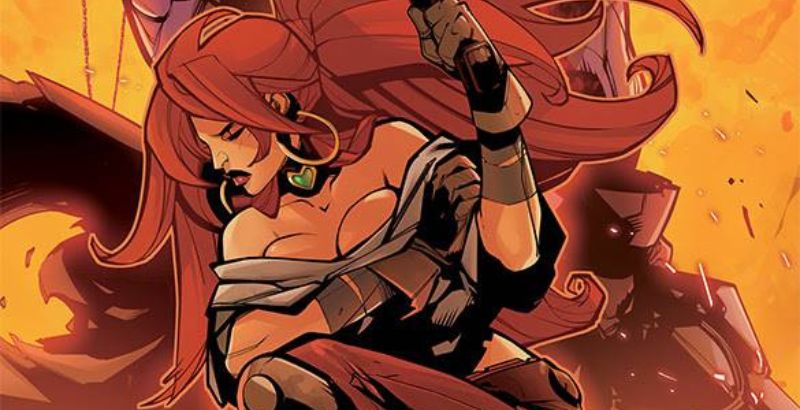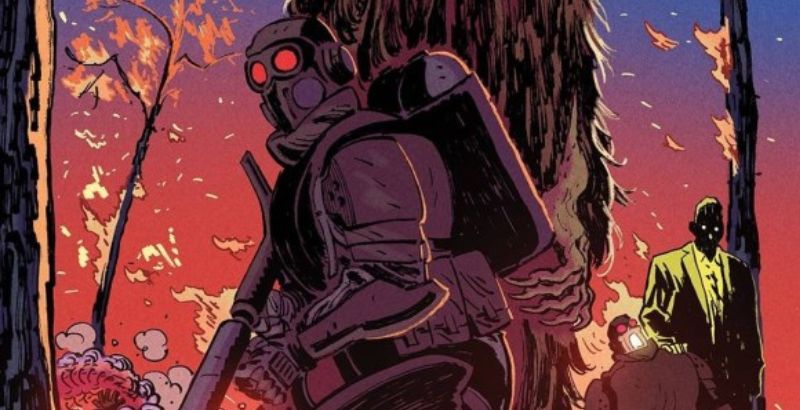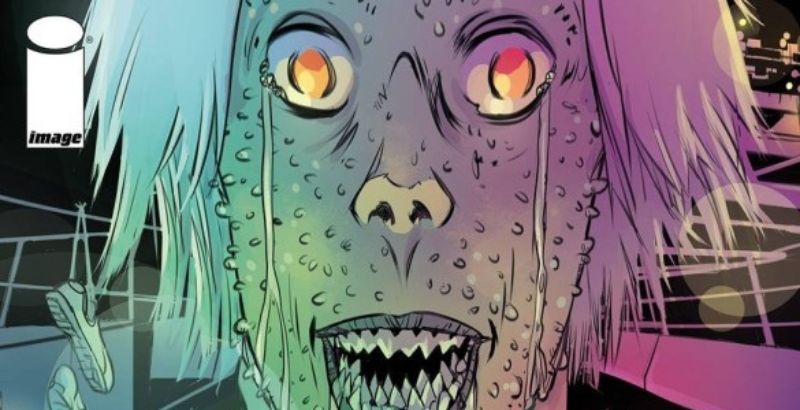
Aria: Heavenly Creatures #1 is published by Image Comics, written by Brian Holguin, art by Jay Anacleto and Brian Haberlin, colors by Drew Posada, Raymund Lee, and Brian Heaberlin with letters by Francis Takenaga. It is the 1800s, the era of steel and steam, an age when scientific advancement is matched only by the darkness some build out of it. It is a time of dire straights for many, a time when work hours stretch out eternally and colonialism brings the boot of oppression to the necks of the world. And yet, not all light has left this cold world. Some lights may never go out. Ancient magic, largely unknown to the world of humans, still walks among them.
Aria: Heavenly Creatures #1 opens its tale with two full pages of nothing but type. Printed in solid block print, this opening explains the setting while omitting the illustrations that fill the rest of the book. This is a smart decision. It gets the reader to the story while consuming probably a fifth of the time it would’ve taken if it was accompanied by full illustrations. As this is a one-shot story, time is of the essence. And while it does a solid job of painting a picture of the mixes of harshness and wonder that filled that era in time, it does commit a rather glaring omission in its presentation.
These first pages set the stage by singing the praises and marvels of England, her reach, and her failings toward her people. It speaks of naval supremacy and workhouses. Yet, while speaking of England’s many failings, these shortcomings are limited only to how she treats her own poor. While the praise wraps the world over, there is no mention of the nation’s sins toward that same world. Of conquests in Africa and beyond, and the mistreatment of those to whom the land already belonged. If you are to speak of a nation’s success in a given sphere, one must also acknowledge its failures. No matter how unseemly they may be.
With the start of Aria: Heavenly Creatures #1 narrative, the reader is introduced to the main character and heroine of our story, Lady Kildare. As she arrives at a most unusual party, Kildare presents herself with grace, poise, and elegance. She moves among the other attendants as if she were a queen come upon the shores of lesser beings. And perhaps with some good reason.
After reuniting with a friend, the two ladies, accompanied by a gentleman artist, make their way to the rougher end of London town. There they attend a menagerie of oddities. While the bulk of the show is of little interest to our protagonist, one subject catches her eye. The star of the show, who the host claims to be a genuine angel from on high. Lady Kildare senses that the host’s claims bear merit and decides to return to the theatre after dark in the hopes of rescuing the imprisoned celestial being. This task will quickly become more than the Lady bargains for.
The writing in Aria: Heavenly Creatures #1 does a good job of expressing the story’s characters while keeping the dialogue feeling naturally short. The conversations are often brief, clipped affairs. How a person speaks, or if they speak at all is often more informative than the words themselves. This style of discourse feels fitting for the situations and individuals the story presents.
The art in this book overall is rather impressive, though it does have a glaring stumble to it. While the feel of the 19th century is imbued in every panel, and every character both looks and acts their part with excellent illustrative skill, it is the angel that falls flat here. What is supposed to be the star of the show will be a source of cringe for many readers. Drawing inspiration from the classic swords and sorcery style of illustration, this warrior of the divine is armored in nothing more than a metal bra and cloth thong. Seeing how the character is introduced to the tale, she is not above injury or harm. Since her armor is not merely a display piece, perhaps something a bit more functional would prove a better choice.
Rounding out the story’s presentation is the lettering. The story flows smoothly, and the dialogue placement is spot on, allowing the reader to fully enjoy the story’s lovely illustrations. When all is said and done, Aria: Heavenly Creatures #1 delivers an interesting tale of Gothic era fantasy. The story holds to a good pace and gives readers an interesting tale from start to finish.
Aria: Heavenly Creatures #1 is available on February 17th wherever comics are sold.
Aria: Heavenly Creatures #1
TL;DR
When all is said and done, Aria: Heavenly Creatures #1 delivers an interesting tale of Gothic era fantasy. The story holds to a good pace and gives readers an interesting tale from start to finish.








